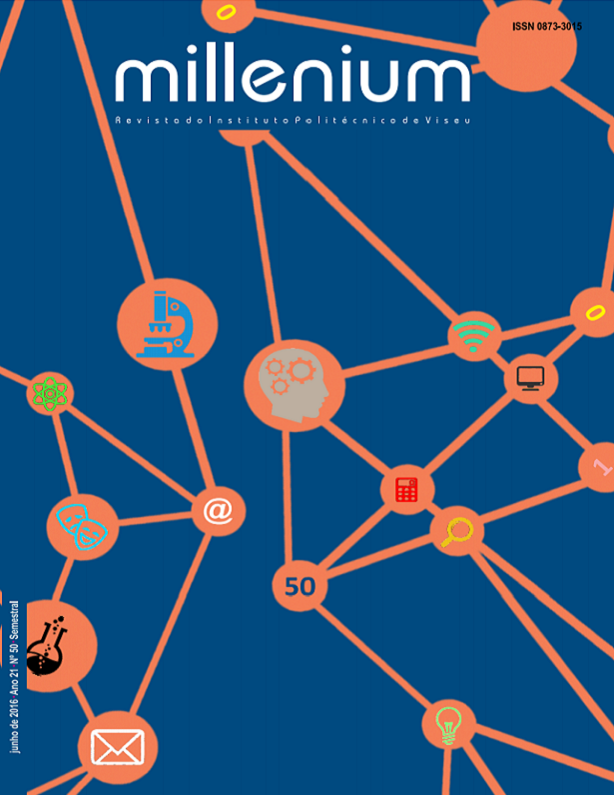A Dor na Criança submetida a Punção Venosa Periférica. Prevenção com Eutectic Mixture of Local Anesthetics
Palabras clave:
dor, criança, procedimentos dolorosos, punção venosa periférica, anestésicos tópicosResumen
Na prática diária deparamo-nos frequentemente com a dor e o sofrimento de crianças submetidas a punção venosa periférica (PVP), cuja minimização continua a constituir um verdadeiro desafio na atuação dos enfermeiros pela necessidade premente da uniformização deste procedimento. Atualmente, a utilização do anestésico tópico local para prevenção da dor na prática pediátrica, sobretudo na realização de procedimentos dolorosos, deve ser preconizada como fundamental na assistência integral à criança, garantindo uma melhoria significativa dos cuidados prestados.
Objetivos: Estudar a eficácia do penso oclusivo EMLA® na prevenção da dor da criança submetida a punção venosa periférica e analisar alguns fatores que levem a uma melhor compreensão da dor na criança submetida a procedimentos dolorosos.
Metodologia: Estudo quase-experimental com abordagem quantitativa. A amostra incluiu 78 crianças com idade entre os 6 e os 17 anos, dividida em dois grupos: o GE (Grupo Experimental), constituído por 47 crianças submetidas a punção venosa com aplicação prévia de EMLA®; o G (Grupo de Controlo), constituído por 31 crianças submetidas a punção venosa sem aplicação de anestésicos tópicos. Os dados foram obtidos através de um formulário do qual constavam escalas para avaliação da dor.
Resultados: No total 24,4% das crianças avaliaram a dor no índice 0 (sem dor), das quais em 23,1% foi utilizado anestésico tópico. No GC observaram-se índices de dor médios (4.81) significativamente mais elevados do que no GE (1.96).
Conclusão: Os resultados do estudo comprovam a eficácia do anestésico tópico EMLA® na prevenção e na redução da dor na criança submetida a punção venosa e permitiram também verificar a relação de algumas variáveis com a dor na criança submetida a este procedimento.
Descargas
Citas
• Batalha, Luís (2005). As dificuldades na quantificação exacta da dor. Servir, 53(4): 166-174.
• Batalha, Luís (2010). Intervenções não farmacológicas no controlo da dor em cuidados intensivos neonatais. Referência, 2: 73-80.
Disponível em: .
• Barros, L. (2003). Psicologia Pediátrica: Perspectiva Desenvolvimentista. 2ª ed. Lisboa: Climepsi.
• Barros, Luísa (2010). A dor pediátrica associada a procedimentos médicos: contributos da psicologia pediátrica. [Versão eletrónica] Temas em Psicologia. 18(2): 295-306. Disponível em: <http://www.sbponline.org.br/revista2/vol18n2/PDF/v18n2a04.pdf>.
• Carvalho, Maria Margarida M. J. (1999). Dor: um estudo multidisciplinar. 2ª ed. São Paulo: Summus Editorial.
• Eichenfield, M. D. Lawrence F. et al. (2002). A Clinical study to evaluate the efficacy of ELA-Max (4% Liposomal Lidocaine) as compared with Eutectic Mixture of Local Anesthetics Cream for pain reduction of venipuncture in children. [Versão eletrónica] Pediatrics. 109(6): 1093-1099. Disponível em: <http://pediatrics.aappublications.org/content/109/6/1093.full.pdf+html>.
• Fragata, Célia. (2010). Avaliação Pediátrica da Ansiedade face à Dor na Punção Venosa em Crianças com e sem Problemas do Desenvolvimento. Dissertação de Mestrado. Universidade de Coimbra, Portugal.
• Kleiber, R.N. Charmaine et al. (2002). Topical anesthetics for intravenous insertion in children: a randomized equivalency study. [Versão eletrónica] Pediatrics, 110(4): 758-761. Disponível em: <http://pediatrics.aappublications.org/content/110/4/758.abstract>.
• Macedo, E. C. et al. (2006). Reacciones de niños y adolescentes sometidos a analgesia tópica local en la punción venosa periférica. [Versão eletrónica] Enfermería Global, 9: 1-8. Murcia. Disponível em: <http://revistas.um.es/eglobal/article/view/308>.
• Okada, M. et al. (2001). Dor em Pediatria. [Versão eletrónica] Revista Médica. 80: 135-156.
• Queiroz, Fernanda Cristina et al. (2007). Manejo da dor pós-operatória na Enfermagem Pediátrica: busca de subsídios para aprimorar o cuidado. [Versão eletrónica]. Revista Brasileira de Enfermagem, 60(1): 87-91.
Disponível em: <http://www.scielo.br/scielo.php?pid=S0034-71672007000100016&script=sci_arttext>.
• Silva, Esther Almeida et al. (2007). Práticas e condutas que aliviam a dor e o sofrimento em crianças hospitalizadas. Comunicação Ciência Saúde. 18(2): 157-166.
• Vázquez, A. S. Fernández et al. (1999). Ensaio do creme EMLA para venopunção em crianças [Consultado em 16 Set. 2011]. Disponível em: <http://www.clasa-anestesia.org/revistas/portugal/HTML/PortugalEnsaio_Do_Creme_Emia_Para_Venopu.htm>.
• Udelsmann, A. B. et al. (1997). Estudo comparativo entre a inalação de óxido nitroso e a aplicação da mistura eutética de anestésicos locais na prevenção da dor da punção venosa em anestesia pediátrica. [Versão eletrónica]. Revista Brasileira de Anestesiologia. 47(6): 497-501. Disponível em: <http://bases.bireme.br/cgibin/wxislind.exe/iah/online/?IsisScript=iah/iah.xis&src=google&base=ADOLEC&lang=p&nextAction=lnk&exprSearch=277377&indexSearch=ID>
Descargas
Publicado
Cómo citar
Número
Sección
Licencia
Los autores que sometan propuestas para esta revista estarán de acuerdo con los siguientes términos:
a) Los artículos serán publicados según la licencia Licença Creative Commons (CC BY 4.0), conforme el régimen open-access, sin cualquier coste para el autor o para el lector.
b) Los autores conservan los derechos de autor y conceden a la revista el derecho de la primera publicación, se permite la divulgación libre del trabajo, desde que sea correctamente atribuida la autoría y la publicación inicial en esta revista.
c) Los autores están autorización para firmar contratos adicionales separadamente, para la distribución no exclusiva de la versión del trabajo publicada en esta revista (ej.: publicar en un repositorio institucional o como capítulo de un libro), con reconocimiento de la autoría y publicación inicial e esta revista.
d) Los autores tienen permiso y son alentados a publicar y distribuir su trabajo on-line (ej.: en repositorios instituciones o en su página personal) ya que eso podrá generar alteraciones productivas, así como aumentar el impacto y la citación del trabajo publicado.
Documentos necesarios para la sumisión
Plantilla del artículo (formato editable)





